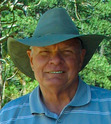Evan E. Filby's Blog: South Fork and More, page 115
July 23, 2013
Governor William Wallace Makes His First Appointment, a Territorial Auditor
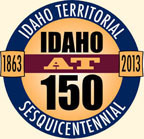 As noted before, the President of the United States, with the advice and consent of the Senate, appointed the Governor, Secretary, Chief and Associate Justices, Attorney, and Marshal for Idaho Territory. Section 7 of the Organic Act for the Territory stipulated that the Governor could “appoint all officers not herein otherwise provided for.”
As noted before, the President of the United States, with the advice and consent of the Senate, appointed the Governor, Secretary, Chief and Associate Justices, Attorney, and Marshal for Idaho Territory. Section 7 of the Organic Act for the Territory stipulated that the Governor could “appoint all officers not herein otherwise provided for.”Later, the Governor had to make these appointments “by and with the advice and consent of the legislative Council.” (The Territorial Council is roughly eq...
Published on July 23, 2013 00:30
Gambler Patterson Shoots and Kills Ex-Sheriff Pinkham [otd 07/23]
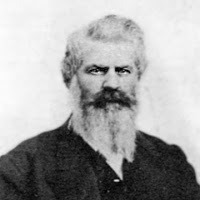 Sumner Pinkham.
Sumner Pinkham.Idaho State Historical Society.On Sunday, July 23, 1865, businessman and ex-sheriff Sumner Pinkham took a hired carriage from Idaho City to a resort about two miles west of town. Locals often enjoyed a relaxing dip in the pool fed by the warm springs out back. According to some, Pinkham and some friends were soon in the bar singing raucous anti-Secesh songs. Yet others would dispute even that apparently simple fact.
A native of Maine, Pinkham had joined the rush to California go...
Published on July 23, 2013 00:06
July 22, 2013
Army Establishes Fort Lapwai on the Nez Percé Indian Reservation [otd 07/22]
According to Idaho State Historical Society records, a troop of Oregon Volunteer cavalry established Camp – later Fort – Lapwai on July 22, 1862. The location selected was near the mission established by Presbyterian minister Henry Harmon Spalding in 1836 [blog, Nov 29]. Although the church abandoned the mission after the Whitman Massacre in 1847, the Nez Percé Indians continued to occupy the site.
When Elias Pierce discovered gold on Orofino Creek, in 1860, prospectors poured into the region....
When Elias Pierce discovered gold on Orofino Creek, in 1860, prospectors poured into the region....
Published on July 22, 2013 00:07
July 21, 2013
Ammunition Innovator and Manufacturer Richard, "Dick," Speer [otd 07/21]
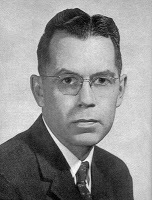 Dick Speer.
Dick Speer.Beal & Wells photo.Lewiston industrialist Richard A. "Dick" Speer was born July 21, 1915 in Cedar Falls, Iowa. His father, who started out as a farmer and nurseryman, took up "manufacturing and engineering pursuits" before Richard's birth. Thus, after a year at a teachers' college, Richard took a job in the engineering department of the Maytag Corporation.
In 1939, he began taking courses at the University of Washington in Seattle while working nights as a tool and die maker fo...
Published on July 21, 2013 00:02
July 20, 2013
Poor Roads and Blistering Weather Hobble Traffic to the Boise Mines
 On July 20, 1863, The Oregonian reported, “Increased facilities are offering daily for transportation to the Boise mines. We are informed that John Slavin & Co. have established a stage line to run from the Dalles to Bannock City.”
On July 20, 1863, The Oregonian reported, “Increased facilities are offering daily for transportation to the Boise mines. We are informed that John Slavin & Co. have established a stage line to run from the Dalles to Bannock City.”In reality, this announcement was, at best, premature. Of course, emigrants on the Oregon Trail did get wagons across Idaho and then the Blue Mountains in Oregon. However, the trip took a horrific toll on their draft animals, and the bones of dead oxen littered...
Published on July 20, 2013 00:30
Wool Grower, Banker, and Public Servant Ralph Hunt [otd 07/20]
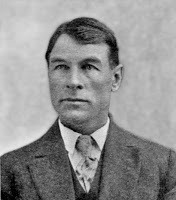 R. S. Hunt. Hawley photo.Rancher, banker, and state legislator Ralph Stephen Hunt was born July 20, 1869 in Weber, Utah. To the age of about 25, he worked as a ranch hand at various locations in Utah.
R. S. Hunt. Hawley photo.Rancher, banker, and state legislator Ralph Stephen Hunt was born July 20, 1869 in Weber, Utah. To the age of about 25, he worked as a ranch hand at various locations in Utah.He moved to southeast Idaho in 1894. There, he herded stock, both cattle and sheep. Over the next five or six years, he worked at ranches across much of southern Idaho.
Then, in 1900, Ralph's parents, Ralph H. and Sarah, moved to the Rexburg area. At that point, the Mormon population in eastern Id...
Published on July 20, 2013 00:09
July 19, 2013
Railroad Town of Burley Incorporated [otd 7/19]
The town of Burley, Idaho, was incorporated on July 19, 1909. The town had grown explosively since being platted four years earlier, and many businesses supported the growing farm population. That included a new Bank of Commerce, founded in the spring of 1909 with former Boise Mayor James H. Hawley as Vice President.
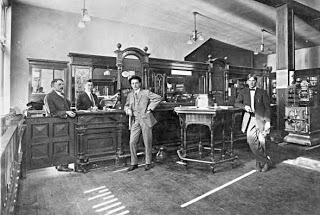 Bank of Commerce, Burley, ca. 1913.
Bank of Commerce, Burley, ca. 1913.
Idaho State Historical Society.
The location, near where Goose Creek emptied into the Snake River, was a familiar landmark on the Oregon Trail....
 Bank of Commerce, Burley, ca. 1913.
Bank of Commerce, Burley, ca. 1913.Idaho State Historical Society.
The location, near where Goose Creek emptied into the Snake River, was a familiar landmark on the Oregon Trail....
Published on July 19, 2013 00:09
July 18, 2013
Some Idaho Mining Areas Doing Well, Territorial Census Commenced
 News printed in Lewiston’s Golden Age made its way into The Oregonian for July 18, 1863. The items included good news from the Boise Basin: For the summer, three partners on one claim had “twenty yeast boxes filled with gold.”
News printed in Lewiston’s Golden Age made its way into The Oregonian for July 18, 1863. The items included good news from the Boise Basin: For the summer, three partners on one claim had “twenty yeast boxes filled with gold.” The paper continued, “The Elk City mines are paying handsomely. They average all the way from $10 to $100 a day to the hand. There is a great demand for hands at $5 per day.”
They did report difficulties in the Florence area because the largest ditch company wanted to ch...
Published on July 18, 2013 00:30
Trappers Clash with Indians at the Battle of Pierre’s Hole [otd 07/18]
On July 18, the great mountain man rendezvous of 1832, at Pierre's Hole, was breaking up. The only Idaho location where the fur companies held their annual conclave, Pierre's Hole is known to us today as the Teton Valley.
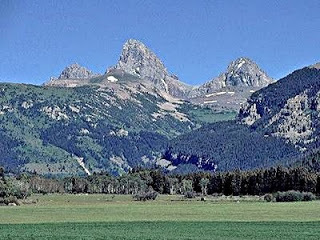 Teton Valley – view of the three Tetons from the west.
Teton Valley – view of the three Tetons from the west.
While they were preparing to hit the trail, one trapper party noticed a column of Indians approaching. The band consisted of 150-200 individuals, including many women and children. Perhaps fifty to sixty qualified as war...
 Teton Valley – view of the three Tetons from the west.
Teton Valley – view of the three Tetons from the west. While they were preparing to hit the trail, one trapper party noticed a column of Indians approaching. The band consisted of 150-200 individuals, including many women and children. Perhaps fifty to sixty qualified as war...
Published on July 18, 2013 00:08
July 17, 2013
Fur Trade and Real Estate Multimillionaire John Jacob Astor [otd 07/17]
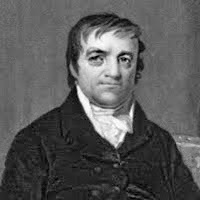 J. J. Astor. Library of Congress.John Jacob Astor, who became America’s richest man, was born July 17, 1763 in Waldorf (near Heidelberg, Duchy of Baden, before the creation of Germany). He was born into a lower middle class family: His father was a butcher.
J. J. Astor. Library of Congress.John Jacob Astor, who became America’s richest man, was born July 17, 1763 in Waldorf (near Heidelberg, Duchy of Baden, before the creation of Germany). He was born into a lower middle class family: His father was a butcher.With no prospects at home, Astor left as a teenager. He spent four years in London, where he learned to speak English (with a heavy accent). Then, in 1784, John Jacob emigrated to the new United States.
He learned the fur trade and opened a...
Published on July 17, 2013 00:09
South Fork and More
As an author's vehicle, this blog will include my thoughts on the writing process, supplemental information about my books, and "status"updates on current projects.
My long-time blog -- the South Fork As an author's vehicle, this blog will include my thoughts on the writing process, supplemental information about my books, and "status"updates on current projects.
My long-time blog -- the South Fork Companion -- leans heavily toward Idaho history. In particular, I post an "On This Day" (OTD) item with an Idaho "spin" for every day of the year. I originally tried to have the system bring over the entire item, but the transfer does not handle the photo captions well. That's not good, because I generally include two images with each of my OTD posts. ...more
My long-time blog -- the South Fork As an author's vehicle, this blog will include my thoughts on the writing process, supplemental information about my books, and "status"updates on current projects.
My long-time blog -- the South Fork Companion -- leans heavily toward Idaho history. In particular, I post an "On This Day" (OTD) item with an Idaho "spin" for every day of the year. I originally tried to have the system bring over the entire item, but the transfer does not handle the photo captions well. That's not good, because I generally include two images with each of my OTD posts. ...more
- Evan E. Filby's profile
- 2 followers


